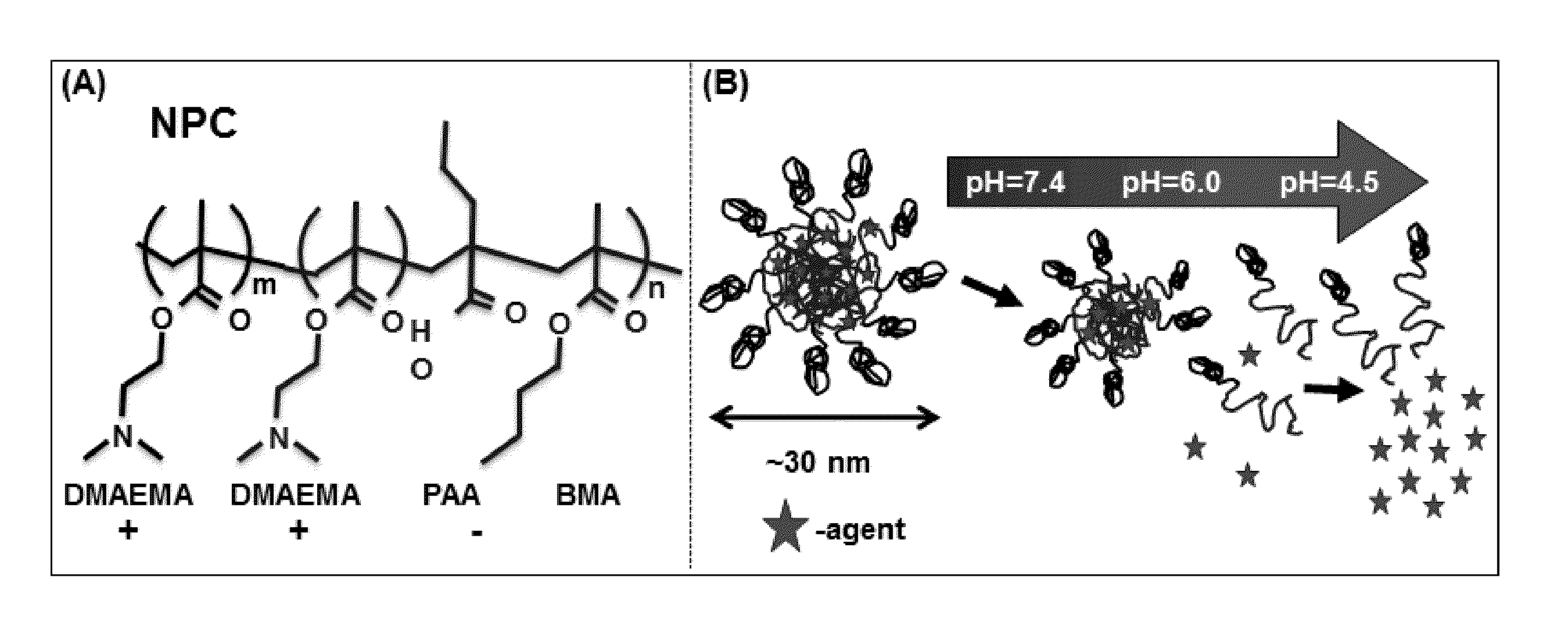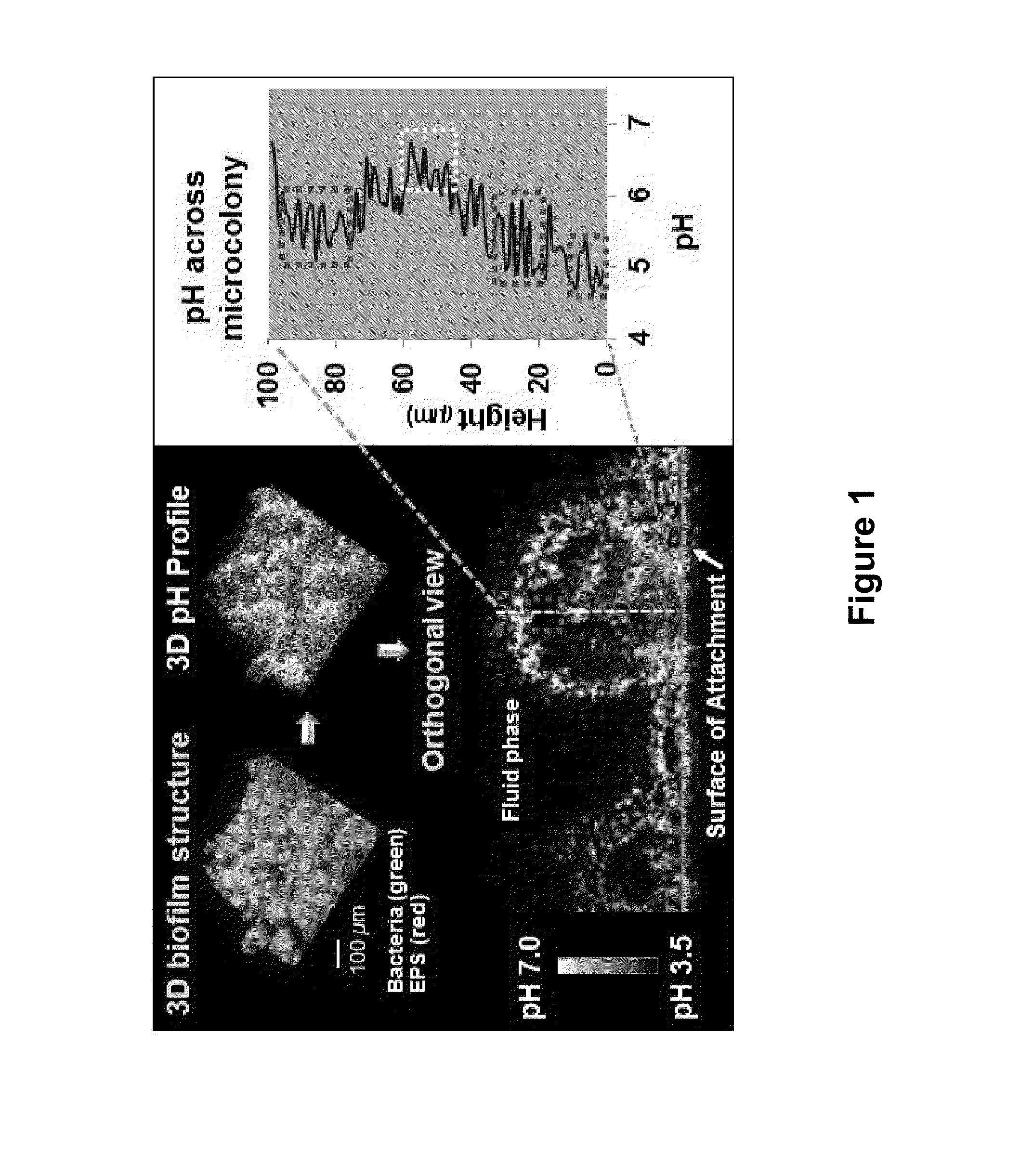Nanoparticles for Controlled Release of Anti-Biofilm Agents and Methods of Use
a technology of nanoparticles and biofilms, applied in the field of nanoparticles for controlled release of biofilm agents and methods of use, can solve the problems of limited current approaches to controlling/modulating virulent biofilm formation, difficult development of novel therapeutic approaches in the mouth, and difficult development of novel therapeutic approaches
- Summary
- Abstract
- Description
- Claims
- Application Information
AI Technical Summary
Benefits of technology
Problems solved by technology
Method used
Image
Examples
experimental examples
[0265]The invention is further described in detail by reference to the following experimental examples. These examples are provided for purposes of illustration only, and are not intended to be limiting unless otherwise specified. Thus, the invention should in no way be construed as being limited to the following examples, but rather, should be construed to encompass any and all variations which become evident as a result of the teaching provided herein.
[0266]Without further description, it is believed that one of ordinary skill in the art can, using the preceding description and the following illustrative examples, make and utilize the compounds of the present invention and practice the claimed methods. The following working examples therefore, specifically point out the preferred embodiments of the present invention, and are not to be construed as limiting in any way the remainder of the disclosure.
example 1
Controlled Release of Anti-Biofilm Agents Via pH-Activated Nanoparticle-Carriers
[0267]Nanomaterials and nanoscale systems that actively respond to environmental stimuli can be employed as innovative delivery systems for drugs. Described herein is an exciting approach to retain and locally deliver antibiofilm agents. This approach uses versatile nanoparticle carriers (NPC) that binds to both the pellicle (at-risk site for biofilm formation) and EPS-rich matrix (within biofilm). This non-cytotoxic and non-bactericidal polymer-based nanocarrier also contains pH-responsive elements that facilitate the controlled release of therapeutic agents within acidic environments. Two proven antibiofilm agents (farnesol and apigenin) can be chemically linked to and released from NPC at low-pH values. Farnesol is a membrane-targeting antibacterial agent that is effective at acidic pH, while apigenin is an inhibitor of EPS synthesis. However, neither drug is optimally retained in the mouth. It is des...
example 2
pH-Activated Nanoparticle for Targeted, Controlled Release of Anti-Biofilm Agents in Dental Applications
[0296]The experiments presented herein were conducted to explore the activity of diblock copolymers comprising poly(2-dimethylamino)ethyl methacrylate, butyl methacrylate (BMA), and 2-propylacrylic acid (PAA) (pDMAEMA-b-p(DMAEMA-co-BMA-co-PAA)) and the ability of such polymers to target the dental surface and entrap and deliver the anti-biofilm drug, farnesol. Cationic NPCs as well as several control polymers and micelles were synthesized and analyzed for their ability to target dental surfaces through electrostatic interactions. These NPCs were also analyzed for their ability to load farnesol and to respond to low pH consistent with biofilm microenvironments to enhance carrier binding and trigger farnesol release through micelle core disruption. Finally, the antibacterial and antibiofilm efficacy of NPC-mediated delivery of farnesol was examined.
[0297]It is shown herein that dibl...
PUM
| Property | Measurement | Unit |
|---|---|---|
| molecular weight | aaaaa | aaaaa |
| PDI | aaaaa | aaaaa |
| PDI | aaaaa | aaaaa |
Abstract
Description
Claims
Application Information
 Login to View More
Login to View More - R&D
- Intellectual Property
- Life Sciences
- Materials
- Tech Scout
- Unparalleled Data Quality
- Higher Quality Content
- 60% Fewer Hallucinations
Browse by: Latest US Patents, China's latest patents, Technical Efficacy Thesaurus, Application Domain, Technology Topic, Popular Technical Reports.
© 2025 PatSnap. All rights reserved.Legal|Privacy policy|Modern Slavery Act Transparency Statement|Sitemap|About US| Contact US: help@patsnap.com



